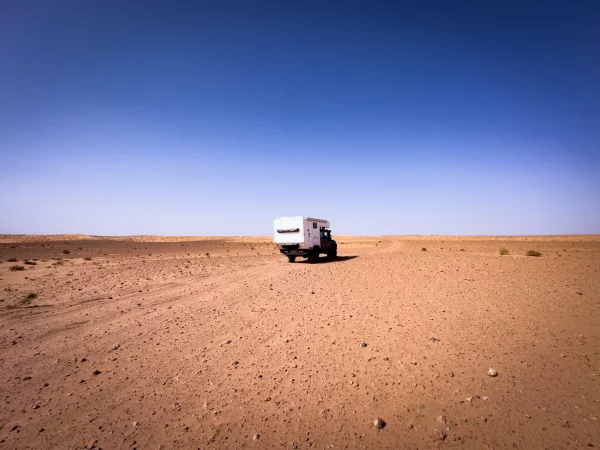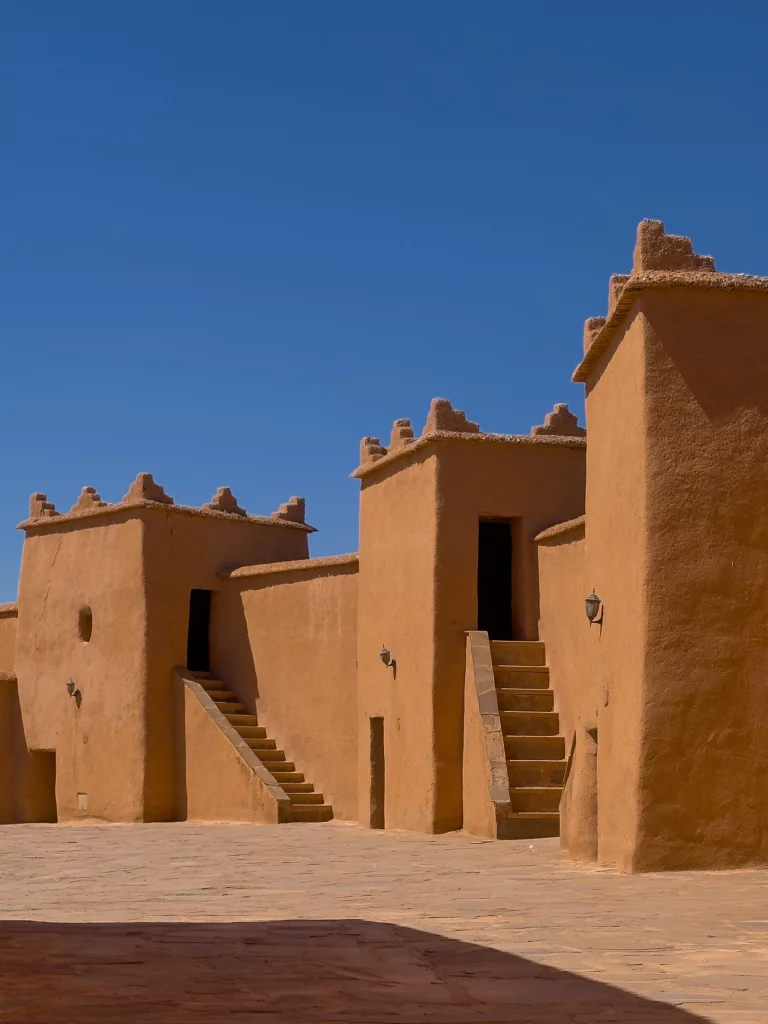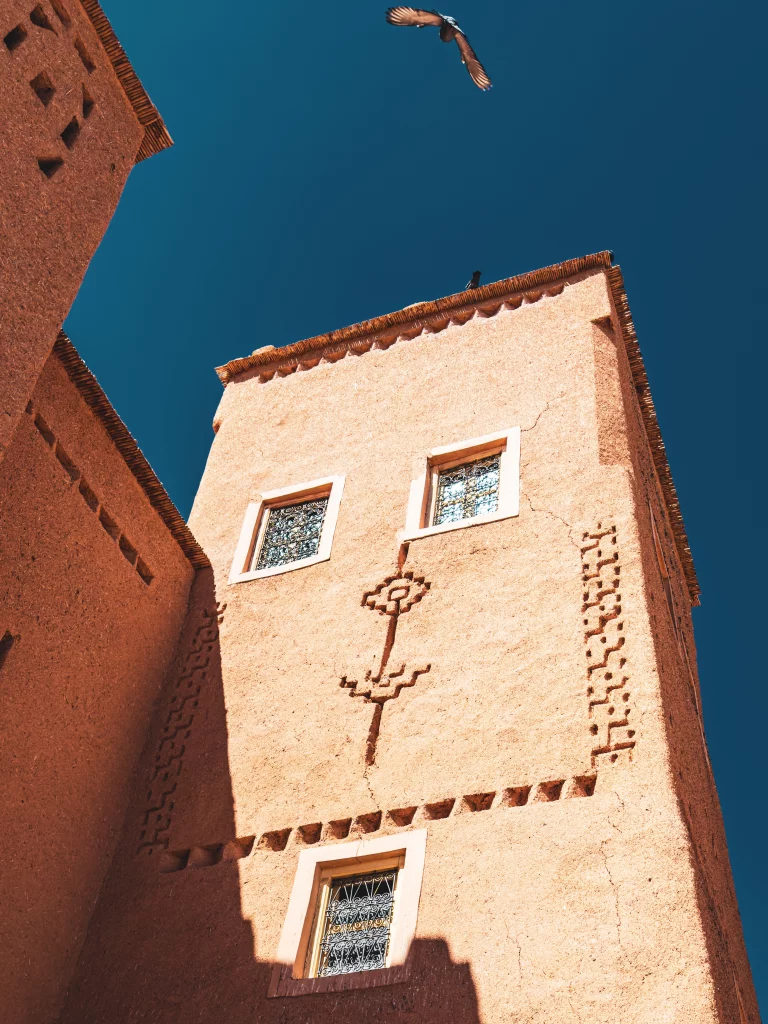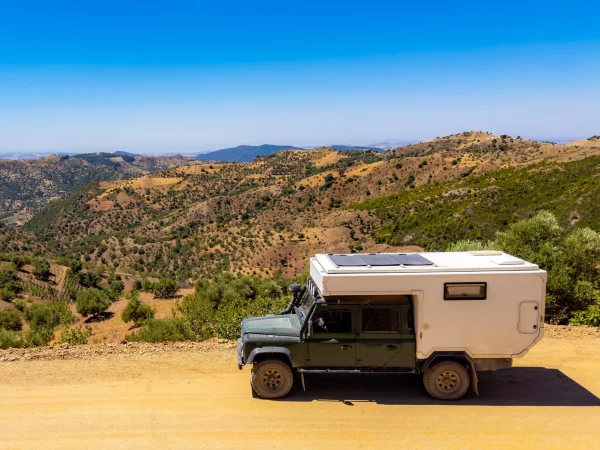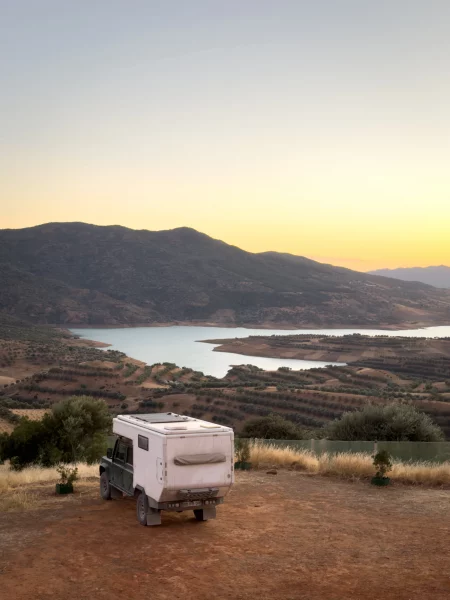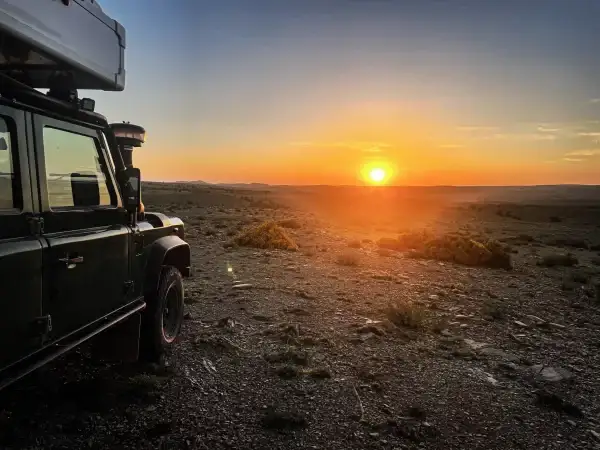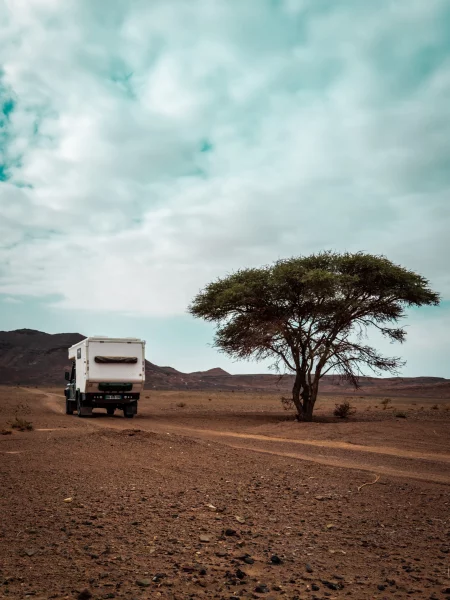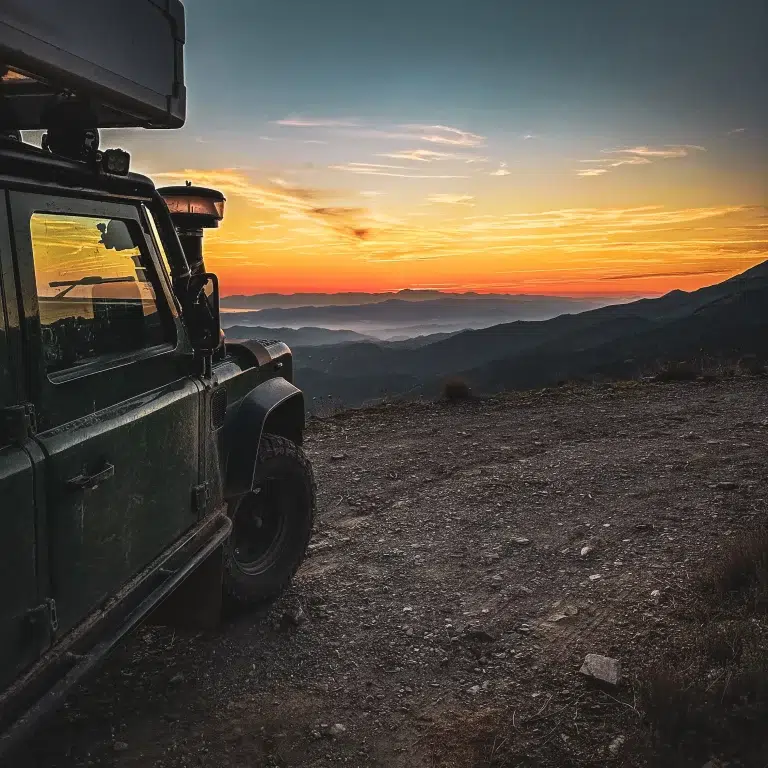Morocco Desert, Atlas & Coastal Trails: 8000km 4×4 Adventure Across Diverse Terrains and Cultures
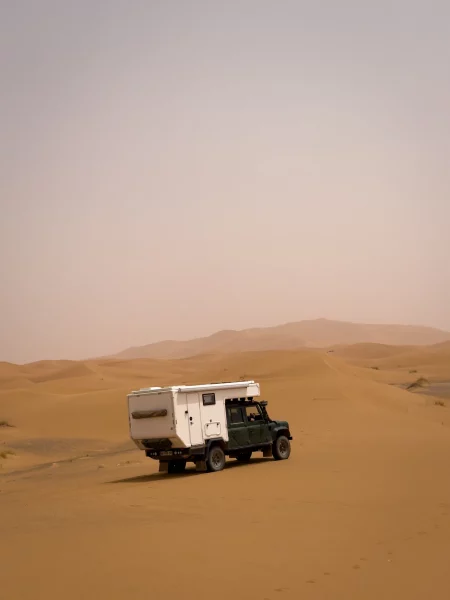
4×4 Morocco: 8000 km from the Morocco Desert to the Atlantic Coast
We’re bringing you a full recap of our incredible 4×4 road trip across a new continent: Africa and more precisely, the stunning country of Morocco. We’ve already shared our experience using a roadbook, a valuable resource that really helped us during our first steps exploring Morocco by 4×4. Over the course of 74 days, we covered 8,000 km and discovered an extraordinary variety of landscapes that left a lasting impression on us.
From the vast Morocco desert to lush green pastures, from rugged mountains to cedar forests, from the wild Atlantic beaches with their sweeping sand dunes to the calm beauty of the Mediterranean coast each place filled us with wonder. At times, the Mediterranean even reminded us of the familiar landscapes of southern France.
The 4×4 Trails of the Morocco Desert
Driving through Morocco in a 4×4 offers an adventure that’s both accessible and thrilling.
With apps like Gaia or Osmand, navigating the countless tracks across the country becomes a breeze. These tools not only help you find nearby routes often wide and well-maintained for supply trucks but also reveal hidden gems for true adventure seekers.
Not quite ready to head out solo?
No worries there are already plenty of roadbooks available, and very soon, we’ll be sharing our own, carefully crafted throughout our journey.
Morocco’s road network is evolving fast, with many routes being paved, making it easier to access even the most remote villages. Naturally, our advice and 4×4 tips will also evolve over time, keeping up with the country’s rapidly developing infrastructure.
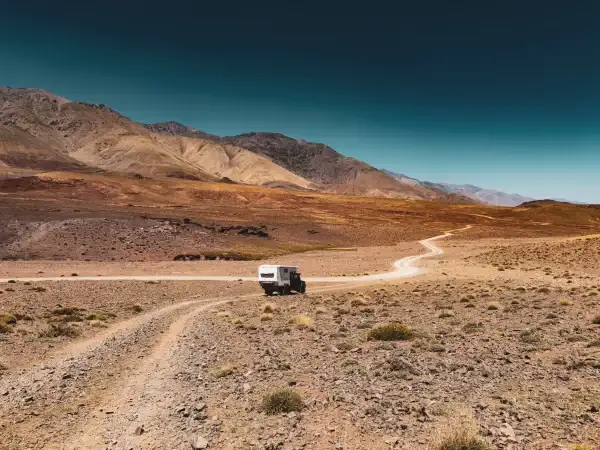
Our First Experience on the African Continent
This trip was also our very first experience on the African continent.
The first week was truly a shock for us.
We discovered areas where access to drinking water is very difficult for remote villages, and as you can imagine, the same goes for food.
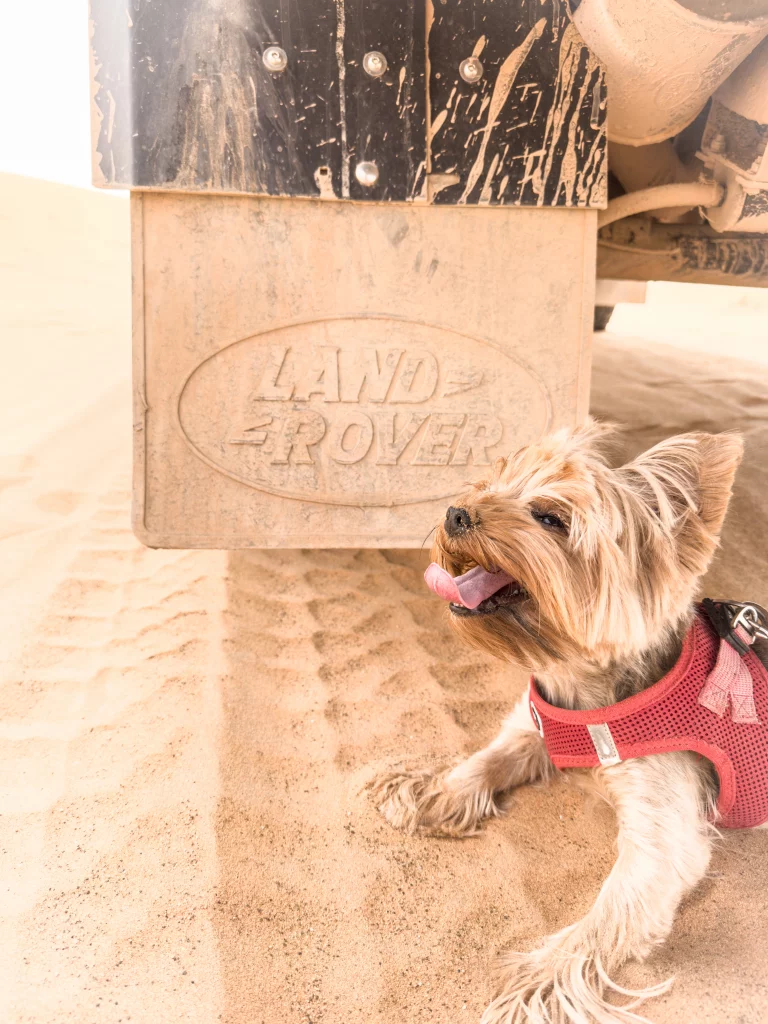

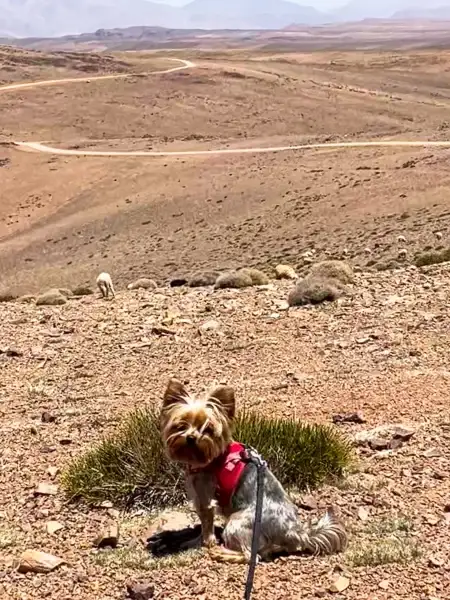
Traveling with your dog
As you probably know, our little traveler Pixie accompanies us everywhere. But to take your dog outside European borders, you need to comply with local and international regulations. First, your dog must be identified with a microchip. Then, you need a passport that meets European regulations, certifying the animal’s identification. The rabies vaccination must be valid. A health certificate and a certificate of good health, issued by an official veterinarian from the country of origin within 48 hours before departure, are also required. Additionally, a rabies antibody test (titration) performed at least 30 days after the rabies vaccination is mandatory to return to the European Union. By following these steps, you can travel worry-free with your furry friend.
The Reality of Remote Villages
The extreme poverty in some villages struck us deeply, with children begging along the roads and waste management being a real issue, marked by the widespread presence of plastic and litter. As you can imagine, if people struggle to live decently, the same goes for the stray dogs and cats. Feel free to bring some food and water to give to the village chief or the Imam. For the stray dogs and cats, a can of pâté or some kibble will make them very happy.
Importance of Highlighting These Realities
It is important to highlight these realities, which are often overlooked in travel blogs, YouTube reports, and Instagram or Facebook posts. However, this should not discourage you from visiting this beautiful country, as tourism can certainly bring financial stability to some remote areas.
Challenges in Remote Areas
In certain areas like Imilchil, Agoudal, and other villages within a 100 km radius as the crow flies, you might encounter stone throwing or children clinging to the vehicle. Don’t give in to the pressure to give directly to the children. This can worsen the situation for those who don’t give and drive tourists away from these regions. Moreover, it leads to children missing school, while education is crucial for a country’s development. If you want to help, it’s better to give to the village chief or the Imam. These guidelines were shared with me by a village chief.
Contrast with the Big Cities
À l’opposé, nous avons visité de grandes villes comme Marrakech, Agadir, Casablanca, Fès, et Chefchaouen où nous avons vu des avenues ultramodernes et très propres. Les lanternes qui ornent les routes sont magnifiques et cela démontre le superbe artisanat du Maroc. La gestion des déchets y est plus présente (attention, ne t’attends pas à ce que ce soit comme en Europe quand même), et l’accès à l’éducation y est largement développé avec des complexes scolaires impressionnants dans les grandes villes de Casablanca et Rabat. Les enfants étudient de 9h à 18h, avec jusqu’à 4 heures de devoirs en primaire. C’est un rythme très intense, six jours par semaine.
In summary, we discovered two very different sides of Morocco.
4×4 Bivouacs and Safety in Morocco DESERT & MORE
We mainly camped in the Oriental region, the Drâa region, and around the mountains near Ouarzazate, close to the edge of the Morocco desert. Morocco is truly a land of 4×4 trails, but when it comes to bivouacking, many areas especially along the coast and near desert zones are marked with no-camping signs. In some regions, the police may ask you to move on, or you might not feel safe due to persistent attention from locals in remote parts of the Atlas Mountains, encouraging you to seek a guesthouse or a campsite instead.
Bivouacking and Safety Along the Coasts
The coasts north of Agadir are particularly difficult for bivouacking, as the authorities do not want foreigners camping there due to dangers related to migrants and drugs. Therefore, we preferred staying in campgrounds to have peaceful nights and avoid being evicted at night by flashlight, often by a police officer.

Safety Around Mount Toubkal and the Beni Mellal Region
The area around Mount Toubkal is also to be avoided for camping. Since the tragic murder of two Swedish women practicing wild camping, it is forbidden to go there without a guide. We also advise against camping within a 100 km radius around Imilchil. We have a great trail to share with you soon around this town, but we strongly recommend staying at Said’s guesthouse for your safety.
Tips for 4×4 Camping in Morocco in Desert, Atlas, Coast and more
The Toubkal region is now strictly regulated following a tragic incident a few years ago. After the unfortunate murder of two Swedish travelers camping wild, access without a guide is now prohibited.
Similarly, we strongly advise against camping within a 100 km radius around Imilchil. It’s a beautiful area, but it’s best to play it safe.
Good news though: we will soon share a fantastic track in this area. To enjoy it with peace of mind, we recommend staying overnight at Said’s guesthouse, a safe and welcoming place for 4×4 travelers.
4×4 Camping in Morocco desert and more: Freedom, But Not Without Rules
In summary, traveling by 4×4 in Morocco will offer you incredible camping spots, often surrounded by breathtaking landscapes.
But keep in mind that free camping won’t always be possible every night.
Fortunately, there are many campsites that are very affordable (especially between April and June) and often quiet off-season.
They offer a good fallback option when conditions or regulations make wild camping difficult.
👉 In short, get ready for an exceptional 4×4 adventure, combining freedom, flexibility… and common sense.
Want to know where we laid our wheels?
If you want to find our best 4×4 bivouac spots in Morocco, we share 3 exceptional places with GPS coordinates in the first issue of our magazine.
Just the inspiration you need to plan your own off-road road trip!
Cost of Living in Morocco Desert and more
Food
1kg tomatoes: 7 Dh
1kg zucchini: 10 Dh
1kg peaches: 25 Dh
1kg cherries: 50 Dh
1kg dates: 50 Dh
1 egg: 1 Dh
Lamb: 130 Dh/kg
Beef: 100 Dh/kg
Chicken: 90 Dh/kg
Camembert cheese: 67 Dh
Moroccan round bread: 1 to 3 Dh (in big cities)
Olive oil: 100 Dh/liter
Bottled water (5 liters): 13 Dh
Spices (for skewers, tagine, couscous): 10 Dh/100g
⚠️ In some souks, prices can go up to 80 Dh/100g!
Energy
Diesel: 12.25 Dh/liter
Gas (3 kg): 12.5 Dh (excluding tax exemption)
Gas (13 kg): 50 Dh
Camping
Camping: around 80 Dh (no electricity) for a camper + 2 people
🐶 Dogs are never charged
Crafts
Glazed tajine dish (for 4 people): 50 Dh
Metal lantern (40 cm): 120 Dh
Pottery lantern (25 cm): 40 Dh
Pair of stitched leather babouches: 50 Dh
Presentation teapot (1L): 300 Dh
Everyday teapot (1.2L): 140 Dh
12 tea glasses: between 60 and 120 Dh depending on decoration (ours: 120 Dh)
Departure Instructions in Nador
🚢 1. Arrival at Nador port: initial procedures
When you arrive at Nador port, the first thing to do is to park near the ferry company you’re traveling with.
You will quickly meet a person wearing a yellow vest standing in the intersections. This person will give you an entry ticket in exchange for two items:
Your crossing ticket
A photo of your vehicle, which you should take right after getting out of your car
This step is essential to enter the port’s control system.
🎫 2. Ticket collection: don’t let yourself be misled
Then, go directly to the ticket counter to collect your final tickets.
➡️ Beware: many Moroccans will try to approach you to “help” or guide you. It may seem useful, but don’t follow them.
👉 Just stick to our instructions: they are more than enough to complete all the steps smoothly.
⏳ 3. Waiting before boarding: patience and vigilance
Once you have your tickets, you’ll need to make your way around the port to join the vehicle queue.
🕒 Prepare for a long wait: in our case, it lasted over 6 hours before boarding.
During this time, stay vigilant:
Keep a regular watch around you: we had three attempts by migrants trying to cling under our Defender…
Lock your vehicle, especially if the rear is accessible
🛂 4. Multiple checks: passports and security
Before boarding, you will have to go through a series of very strict checks:
- Passport check-in, repeated several times (up to 10 times in our case!)
- Three vehicle inspections, with scanners to verify there are no hidden persons
🎯 These checks can take time, but they are essential for safety on board and to ensure the smooth progress of the journey.
⚓ 5. Final check and boarding
After customs, a final vehicle inspection is carried out by the shipping company.
This last step marks the end of the procedures before boarding.
All that’s left is to get on the boat and take a moment to relax…
🇫🇷 6. Good to know: returning to France is much simpler
Good news: returning to France is much faster and smoother.
🕓 In just 30 minutes, we were out of the port and back on French roads.
WE TELL YOU EVERYTHING
Our videos to relive Morocco Desert and more in 4×4
This trip to Morocco was a true adventure, full of discoveries and emotions. We tried to share as much useful information as possible to help you prepare your own 4×4 road trip.
And if you want to relive the landscapes, the tracks, and the highlights of our journey, our YouTube videos are here to plunge you back into the atmosphere!
Feel free to write to us if you have any questions—we’ll be happy to help. We hope our adventure inspires yours!
Our 4×4 road trip in Morocco Desert and More by the numbers
Distance traveled: 8,000 km
Terrains explored: Morocco desert, mountains, forests, Atlantic and Mediterranean beaches
Iconic cities visited: Marrakech, Agadir, Casablanca, Fès
Tip: prioritize secure bivouacs and respect local guidelines
To dive deeper, check out our YouTube videos that will immerse you back into the adventure, and find our 3 best bivouac spots with GPS coordinates in the very first issue of our magazine IntoTheWild.
We can’t wait to share our upcoming 4×4 road trips with you. Thanks for following us throughout this Moroccan journey!

